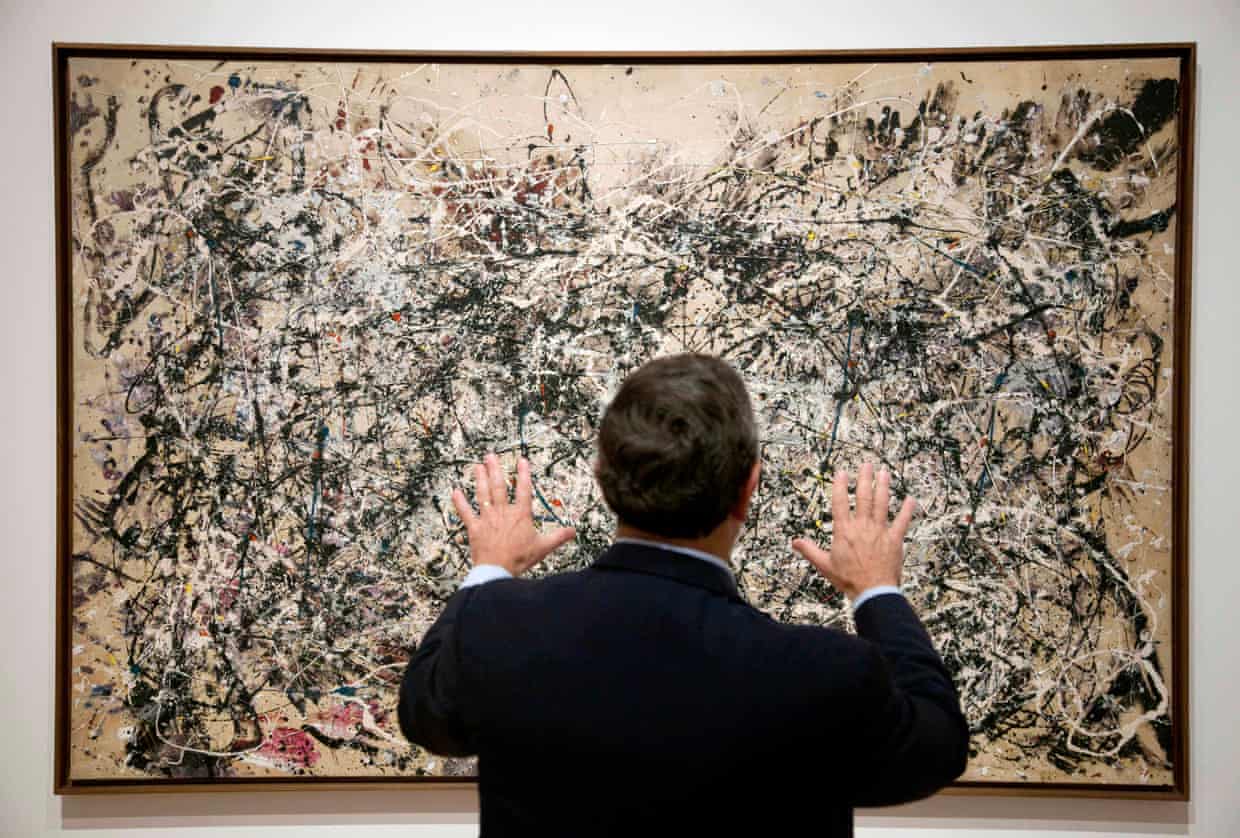Science
Scientists Unveil Source of Jackson Pollock’s Vibrant Blue Paint

Researchers have confirmed the origins of the blue pigment used in Jackson Pollock‘s painting, *Number 1A, 1948*, revealing that he employed a synthetic pigment known as manganese blue. This discovery marks the first definitive identification of the specific blue color used in this iconic artwork, which is currently exhibited at the Museum of Modern Art in New York.
The painting showcases Pollock’s distinctive style, characterized by dripped and splattered paint, creating a vibrant tapestry of colors across a canvas that measures almost 9 feet (2.7 meters) in width. While prior analyses had identified the reds and yellows in the piece, the source of the striking turquoise blue remained unidentified until now. Researchers conducted a detailed study, utilizing laser technology to analyze scrapings of the blue paint. This method allowed them to measure the vibrations of the paint’s molecules, resulting in a unique chemical fingerprint that confirmed the presence of manganese blue.
The findings were published in the *Proceedings of the National Academy of Sciences* and are significant in the field of art conservation. According to Edward Solomon, a professor at Stanford University and co-author of the study, understanding the molecular origins of colors in artworks deepens appreciation for the artist’s techniques. “It’s really interesting to understand where some striking color comes from on a molecular level,” he remarked.
Manganese blue, once favored by artists for its vivid hue, was also used in applications such as coloring cement for swimming pools. However, due to environmental concerns, it was phased out by the 1990s. Although previous research hinted at the possibility of the turquoise color being manganese blue, this study provides the first concrete evidence through direct sampling from the canvas. Gene Hall, a scholar from Rutgers University who has examined Pollock’s works, expressed confidence in the results, stating, “I’m pretty convinced that it could be manganese blue.”
The study’s researchers further explored the chemical structure of the pigment to uncover the reasons behind its vibrant shade. Understanding the chemical composition of art materials is vital for conserving historical paintings and detecting forgeries. Pollock’s technique of pouring paint directly onto the canvas, rather than mixing colors on a palette, allows for more precise sampling in scientific studies.
In their investigation, researchers employed various scientific tools to analyze the paint, mirroring Pollock’s own innovative methods of application, whether through dripping paint using a stick or pouring it straight from the container. Abed Haddad, an assistant conservation scientist at the Museum of Modern Art and co-author of the study, emphasized that while Pollock’s work may appear chaotic to some, he perceived it as methodical.
This research not only reveals the pigments used by Pollock but also enhances the understanding of his artistic processes, bridging the gap between science and art. As the art community continues to investigate Pollock’s techniques, this landmark study serves as a testament to the ongoing dialogue between creativity and scientific inquiry.
-

 Science3 months ago
Science3 months agoToyoake City Proposes Daily Two-Hour Smartphone Use Limit
-

 Top Stories3 months ago
Top Stories3 months agoPedestrian Fatally Injured in Esquimalt Collision on August 14
-

 Health3 months ago
Health3 months agoB.C. Review Reveals Urgent Need for Rare-Disease Drug Reforms
-

 Technology3 months ago
Technology3 months agoDark Adventure Game “Bye Sweet Carole” Set for October Release
-

 World3 months ago
World3 months agoJimmy Lai’s Defense Challenges Charges Under National Security Law
-

 Lifestyle3 months ago
Lifestyle3 months agoVictoria’s Pop-Up Shop Shines Light on B.C.’s Wolf Cull
-

 Technology3 months ago
Technology3 months agoKonami Revives Iconic Metal Gear Solid Delta Ahead of Release
-

 Technology3 months ago
Technology3 months agoApple Expands Self-Service Repair Program to Canada
-

 Technology3 months ago
Technology3 months agoSnapmaker U1 Color 3D Printer Redefines Speed and Sustainability
-

 Technology3 months ago
Technology3 months agoAION Folding Knife: Redefining EDC Design with Premium Materials
-

 Business3 months ago
Business3 months agoGordon Murray Automotive Unveils S1 LM and Le Mans GTR at Monterey
-

 Technology3 months ago
Technology3 months agoSolve Today’s Wordle Challenge: Hints and Answer for August 19









